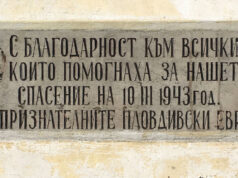Robert Browning’s Byzantium and Bulgaria: A Comparative Study Across the Early Medieval Frontier is a well researched investigation into a critical period in Balkan history. It focuses on the relationship between Bulgaria and Byzantium in the 9th and 10th centuries, with particular attention paid to important historical personalities, the impact of competing interests, and the fluid domestic political landscape of both states as they grapple with both internal development and external pressures in their rival quests for preeminence on the Balkan Peninsula.
A short introduction sets the stage for the scope of investigation the author intends to pursue, followed by a detailed history of the region from late antiquity up to the middle of the 9th century. The reader is well served to have a pen and paper nearby to help keep track of the many tribal migrations, military undertakings and political machinations discussed in the text. Bulgaria’s conversion to Christianity, Arab incursions in the east, and ongoing rivalries between leaders were all crucial in forming patterns and outcomes leading up to the period in question.
The bulk of the book is devoted to comparing the land, cities, industry and trade, political structure, religion, culture, and everyday life of the two states, illuminating significant similarities as well as differences between them. The author paints a picture of two very different worlds, with Byzantium cast as wealthy and sophisticated, and Bulgaria as an underdeveloped, agrarian society. He suggests that the stark differences between the two states can be traced back to their respective local community situations. In Byzantium, the individual was first of all a subject of the state, whereas in Bulgaria there were older, more local structures that claimed an allegiance at least as influential as the central government. The Byzantine viewed the land as a saleable commodity; the Bulgarian was tied to the land which he worked. There also appeared to be much less upward mobility in Bulgarian society than was evident in Byzantium.
Despite these apparent disadvantages, Bulgaria did manage to develop a significant and lasting sense of self during the reigns of Boris and Simeon, to which they would hold fast during the following two centuries of renewed Byzantine rule. It would also sustain them throughout the Ottoman occupation. Even today, the effects of this formative period are readily seen in the Bulgarian commitment to land ownership, close family ties, and rivalry towards neighboring states.
The book includes maps of the Byzantine Empire ca. 1025 and the Growth of Bulgaria, a chronological table, an annotated bibliography and an index.
Table of Contents:
Preface
Chapter 1 Introduction
Chapter 2 The Balkans in Late Antiquity and the Origin of Bulgaria
- The Background
- The Barbarian Invasions of the Fourth and Fifth Centuries
- The Advent of the Slavs
- The Origin of the Bulgarian State
- Bulgaria and Byzantium in the Early Ninth Century
Chapter 3 Bulgaro-Byzantine Relations in the Ninth and Tenth Centuries
Chapter 4 The Land
Chapter 5 Cities
Chapter 6 Industry and Trade
Chapter 7 Political Structure
Chapter 8 Religion
Chapter 9 Culture
Chapter 10 Everyday Life
Chapter 11 Conclusions
Chronological Table
Bibliography
Chapter Notes
Index
ISBN 0-520-02670-5
Citation:
Browning, Robert. Byzantium and Bulgaria: A comparative study across the early medieval frontier. (Berkeley: University of California), 1975.













